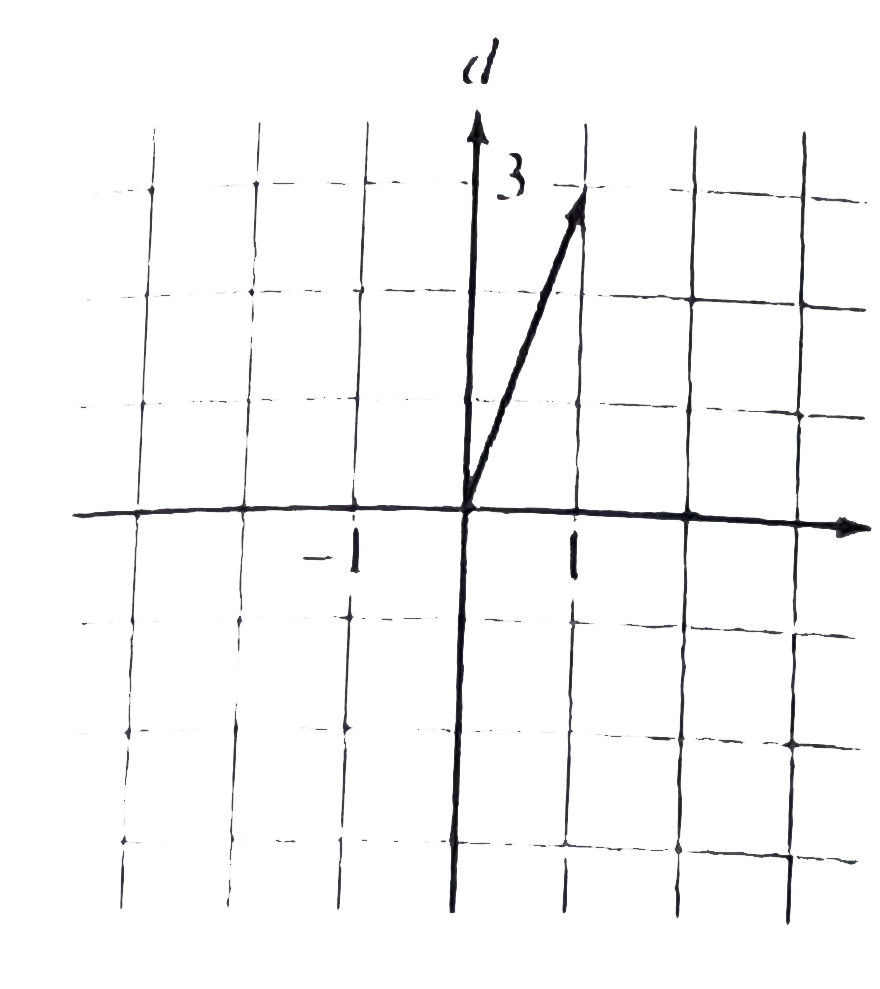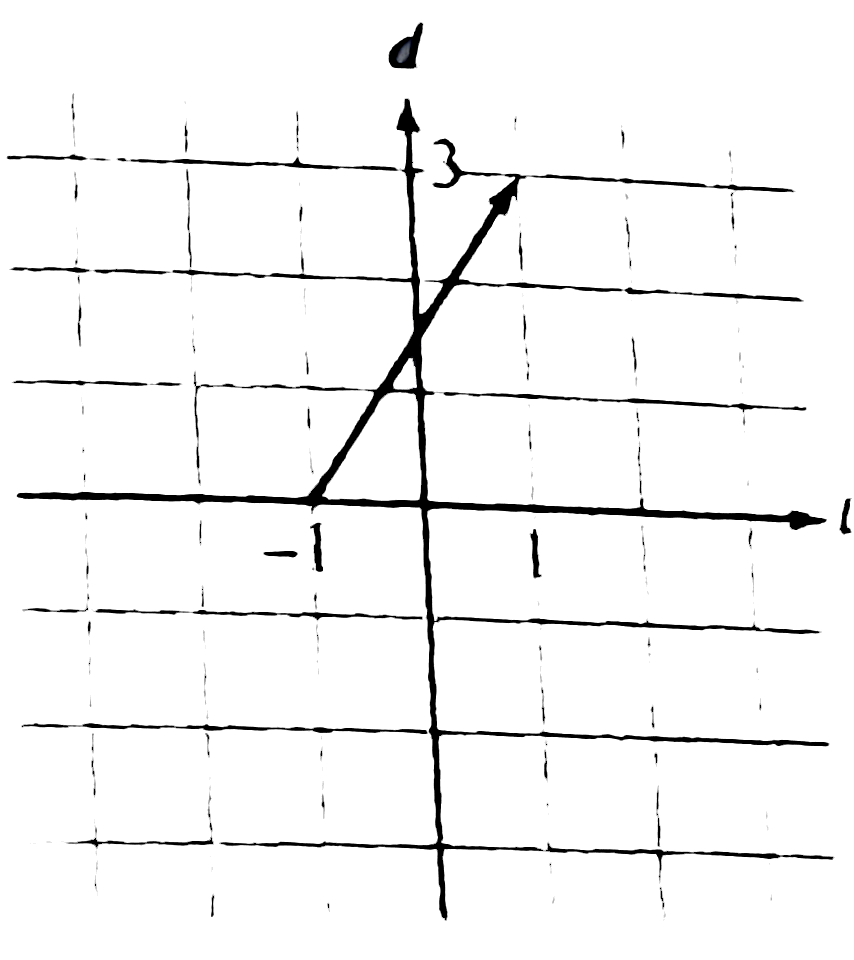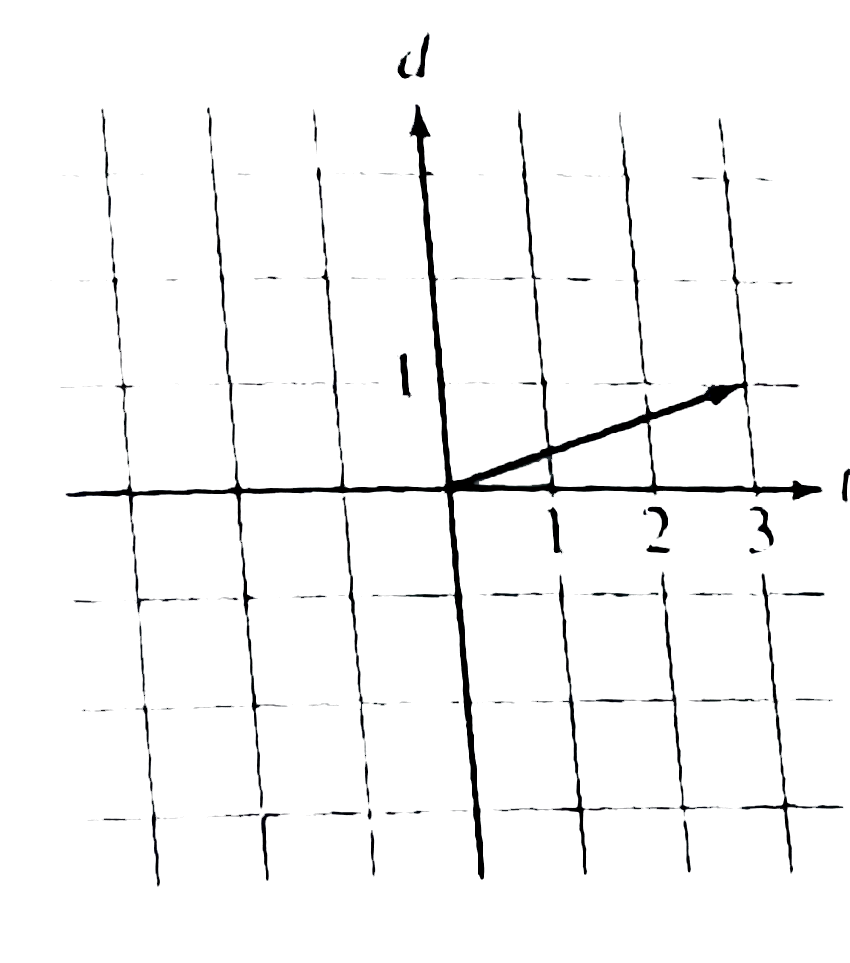The distance d, in mills , that an object travels at a uniform speed is directly proportional to the number of hours t it travels . If the object travels 6 miles in 2 hours , which could be the graph of the relationship between d and t ?




The correct Answer is:B
To solve the problem, we need to establish the relationship between distance d and time t given that the distance is directly proportional to time.
1. Understanding Direct Proportionality:
The relationship between distance d and time t can be expressed as:
d=kt
where k is the constant of proportionality (speed).
2. Finding the Constant of Proportionality:
We know from the problem that the object travels 6 miles in 2 hours. We can use this information to find k:
6=k⋅2
To find k, we divide both sides by 2:
k=62=3
3. Establishing the Equation:
Now that we have k, we can write the equation that relates distance and time:
d=3t
4. Analyzing the Graph:
The equation d=3t indicates that for every hour t, the distance d increases linearly. Specifically:
- When t=0, d=0.
- When t=1, d=3.
- When t=2, d=6.
- When t=3, d=9.
This means the graph will be a straight line starting from the origin (0,0) and increasing with a slope of 3.
5. Identifying Possible Graphs:
We need to look for a graph that starts at the origin and has a positive slope. Any graph that has negative values for time or does not start at the origin can be eliminated.
6. Conclusion:
After analyzing the options, the correct graph will be the one that represents a linear relationship starting from the origin with a slope of 3, which corresponds to option B.
The relationship between distance d and time t can be expressed as:
d=kt
where k is the constant of proportionality (speed).
We know from the problem that the object travels 6 miles in 2 hours. We can use this information to find k:
6=k⋅2
To find k, we divide both sides by 2:
k=62=3
Now that we have k, we can write the equation that relates distance and time:
d=3t
The equation d=3t indicates that for every hour t, the distance d increases linearly. Specifically:
- When t=0, d=0.
- When t=1, d=3.
- When t=2, d=6.
- When t=3, d=9.
This means the graph will be a straight line starting from the origin (0,0) and increasing with a slope of 3.
We need to look for a graph that starts at the origin and has a positive slope. Any graph that has negative values for time or does not start at the origin can be eliminated.
After analyzing the options, the correct graph will be the one that represents a linear relationship starting from the origin with a slope of 3, which corresponds to option B.
Topper's Solved these Questions
Similar Questions
Knowledge Check
- Question 1 - Select One
The amount of time tha Amy walks is directly proportional to the distance that she walks. If she walks a distance of 2.5 miles in 50 minutes, how many miles will she walk in 2 hours?
A4.5B5C6D6.5 - Question 2 - Select One
If Edna drove s miles in t hours, which of the following represents her average speed, in miles per hour?
AstBtsC1stDst - Question 3 - Select One
The formula d = rt is called the distance formula. In this formula, drepresents the distance traveled, r represents the rate of speed, and t represents the time traveled. If a person travels 90 miles in 212 hours, what is the value of r?
A36 mphB45 mphC72 mphD180 mph
If the work done by a body on application of a constant force is directly proportional to the distance travelled by the body, express this in the form of an equation in two variables and draw the graph of the same by taking the constant force as 5 units. Also read from the graph the work done when the distance travelled by the body is (i) 2 units (ii) 0 unit.
View SolutionAn object travels 16m in 4s and then another 16m in 2s. What is the average speed of the object?
View Solution(A):The displacement of a particle starting from rest is directly proportional to the cube of the time of travel then the particle is moving with non uniform acceleration.
(R ):Acceleration →a=d2→sdt2View SolutionThe velocity of a falling object in a vaccum is directly proportional to the amount of time the object has been falling. If after 5 seconds an object is falling at a speed of 90 miles per hour, how fast will it be falling after 12 seconds?
View SolutionThe distance travelled by a body moving along a line in time t is proportional to t3. The acceleration - time (a, t) graph for the motion of the body will be
View Solution

